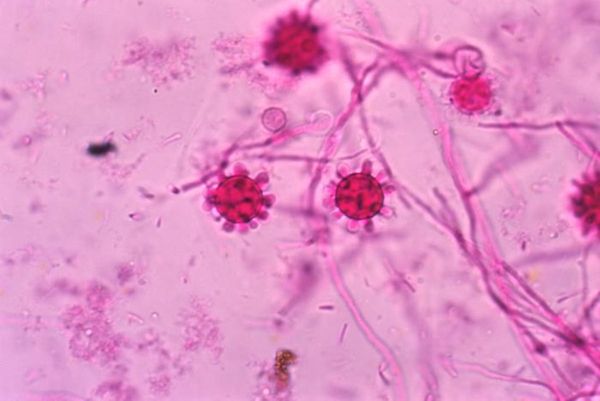The icy waters off the coast of Antarctica are in a state of constant change.
As the seasons swing, sea water surrounding the icy continent freezes over as temperatures plummet in the colder months and then mostly melts away during summer.
For more than 40 years, scientists have observed this seasonal cycle of the Antarctic using satellites, looking for signs of change to the sea ice extent.
Understanding the resilience of the Antarctic sea ice is vital, as changes can have dramatic impacts on global ocean currents, weather and regional climate.
One measurement scientists look at when measuring the health of the sea ice extent is the annual minimum, which is usually around 3 million square kilometres and often falls in February.
Another is the maximum winter extent, which is, on average, almost 19 million square kilometres and is usually recorded near the end of September.
While the sea ice extent has varied enormously over the last four decades, overall it has been increasing ever so slightly relative to the long term monthly average (1981-2010).
That was until 2016.
As sea ice formed and grew towards its maximum extent for the year, something remarkable occurred.
The ice extent began to nosedive.
“It went from one of the higher sea ice extents in July and August 2016, to an astonishing, record-shattering low by October, November and December,” said Ted Scambos, an Antarctic sea ice expert from the University of Colorado.
Studies have since suggested that changing wind patterns and warmer ocean temperatures were to blame for the changes.
Sea Surface Temperature Anomaly (Min -2.5°C - Max 2.5°C)
Warmer than average sea surface temperatures persisted into 2017, helping to produce, what was then, the lowest sea ice extent on record.
It began a period of dramatic variability in the sea ice. Four of the lowest minimum extents in the satellite era have now been recorded since 2016.
The 2022 minimum extent marked the first time the extent had dropped below 2 million square kilometres.
In February this year, it hit yet another all time low of just 1.79 million square kilometres.
The extent is now reforming as the continent moves into the austral winter, but it's currently the smallest it has ever been for this time of year on record.
This blip in the Antarctic pulse is being watched carefully by scientists, keen to understand whether the change is a mere natural fluctuation or part of a longer-term trend being driven by climate change.
Phillip Reid's last trip to Antarctica was almost 30 years ago, but he can still picture the vast walls of steam pouring from cracks in the sea ice.
A spectacular and unusual interaction between the ocean, atmosphere and the ephemeral barrier between them: the sea ice.
Dr Reid, an Antarctic research scientist with the Bureau of Meteorology, had travelled to Antarctica in the winter time on the icebreaker Aurora Australis to study this very reaction.
When ocean surface temperatures are warmer than the air above, it can generate mist that rises from the ocean.
It is called water vapour flux and it is one of many variables, in a complex web, that stand to be affected by variations in Antarctic sea ice.
The smaller the sea ice extent, the more the ocean is exposed, meaning more steam can be generated. This means there's more moisture in the atmosphere, which can eventually turn into rain.
"So overall, we would expect that if there was a reduction in the sea ice, that Australia, particularly south eastern Australia, would see more rainfall that's based on the current research," Dr Reid said. "But not only rainfall, we would see some warmer temperatures during September and possibly cooler temperatures during the winter periods."
Most people will never set foot on sea ice, or even come close enough to see it. But changes to the sea ice can be felt far beyond the shores of Antarctica.
Not only does the sea ice play a vital role in local and regional weather patterns, it's an essential component in driving powerful ocean currents, it fuels marine biodiversity, and can help regulate global climate.
Above the water, the ice provides an important breeding and feeding ground for populations of penguins and seals. Underneath, it's a habitat for an array of marine life.
The melting of ice in spring releases microscopic nutrients into the water — a crucial link in the food chain of the Southern Ocean.
It also acts as an important barrier between the sun and the ocean. White sea ice can reflect incoming heat from the sun; in its absence, the solar radiation is absorbed by the dark ocean, which can in turn warm the seas.
Dr Reid co-authored a study that modelled the impact of ice free coastlines. It found increased exposure to long-period swells could cause the disintegration of ice shelves — the floating extension of Antarctic ice sheets.
Data shows areas of the Amundsen and Bellinghausen seas, in west Antarctica, are already being exposed to the open ocean more often in Summer months.
"So that means that potentially those ice shelves that are around western Antarctica become more vulnerable to ocean processes such as long period swells, which means that, under certain conditions, they can disintegrate," Dr Reid said. "Which means that the ice sheets behind them may go into the ocean, so it has implications for sea-level rise."
For all these reasons and more, scientists keep a watchful eye on the health of Antarctic sea ice.
Despite the recent record-shattering figures, Antarctic experts like Ted Scambos are hesitant to say whether the last seven years represent a long term downward trend in the sea ice extent, and if it is being driven by climate change.
The hesitation is in part due to the relatively short record scientists have of the sea ice extent.
Satellites have only been used to monitor the ice since 1978 and, in that time, the story of Antarctic sea ice has been one of extreme variability.
"So, folks are hesitant to say if the six- or seven-year trend that we've seen is the beginning of something longer term and connected directly to global climate change," Dr Scambos said.
It could take several more years of sea ice decline to be more confident of linking the changes to climate change, Dr Scambos said.
Prior to the record breaking lows of 2016, Antarctica notched up its largest sea ice extents of the satellite era in 2013 and 2014.
The 2014 maximum was more than 1.5 million square kilometres larger than the 1981-2010 average extent and marked the first time on record that the sea ice exceeded 20 million square kilometres.
Petra Heil, a sea ice physicist with the Australian Antarctic Division, believes this variability of extreme highs and lows is a sign of a system imbalance.
She is more confident of the link between climate change and the changes to the sea ice over the last year.
"I'm pretty much convinced it will be, over the long term, a downward trend because we are going through a stage of high instability," Dr Heil said. "We will lose more and more sea ice from year to year and the net downward trend will continue."
"I'm concerned. I'm gravely concerned."
In the northern hemisphere, the impact of climate change on the Arctic ice extent is more established.
Since the mid-80s, the Arctic has been warming twice as fast as the entire world — a phenomenon the vast majority of scientists agree is the direct result of human-induced climate change.
Temperature increases in the Arctic have consistently been two, sometimes three times as high as the rest of the globe. This is known as "polar amplification".
The more the Earth warms, the more the sea ice shrinks.
But unlike the Arctic, the influence of climate change on Antarctic sea ice is not as clear cut.
Sea ice changes in the Arctic have occurred in every region, all year round. In the Southern Ocean, the sea ice surrounding the coastline, which stretches for thousands of kilometres, has been subject to high levels of regional variability, making it harder to spot continent-wide trends.
Dr Scambos and Dr Heil agree that to better understand what is happening, more research is critical.
In August, an expedition of around 60 scientists was due to travel into the East Antarctica Marginal Ice Zone aboard Australia's new $500 million research vessel, RSV Nuyina.
The purpose of the trip was to study the interaction of sea ice, atmosphere, ocean and ecosystems and how that impacts climate.
But the expedition, which would have been the first cross-disciplinary voyage of its kind in more than a decade, was cancelled because of ongoing issues with Nuyina.
Dr Heil, who is the chief investigator on the marginal ice zone study, is now working on alternative research options.
She said that while satellite observations and simulation data had provided invaluable information, field work in Antarctica was urgently needed.
"It's such a strongly coupled system, if there is a small change somewhere, it often has many follow-on effects," she said. "If the system is stable, a small disturbance doesn't really matter. But at the moment, the climate system is out of balance, so any noise will actually amplify that.
"For us to understand all the different signals and noise and how they combine is very important, and so, scientific observations are invaluable to have, and we need to intensify observations now rather than in a few years."
Credits
- Reporting: Mark Doman
- Development: Katia Shatoba
- Design: Alex Palmer







